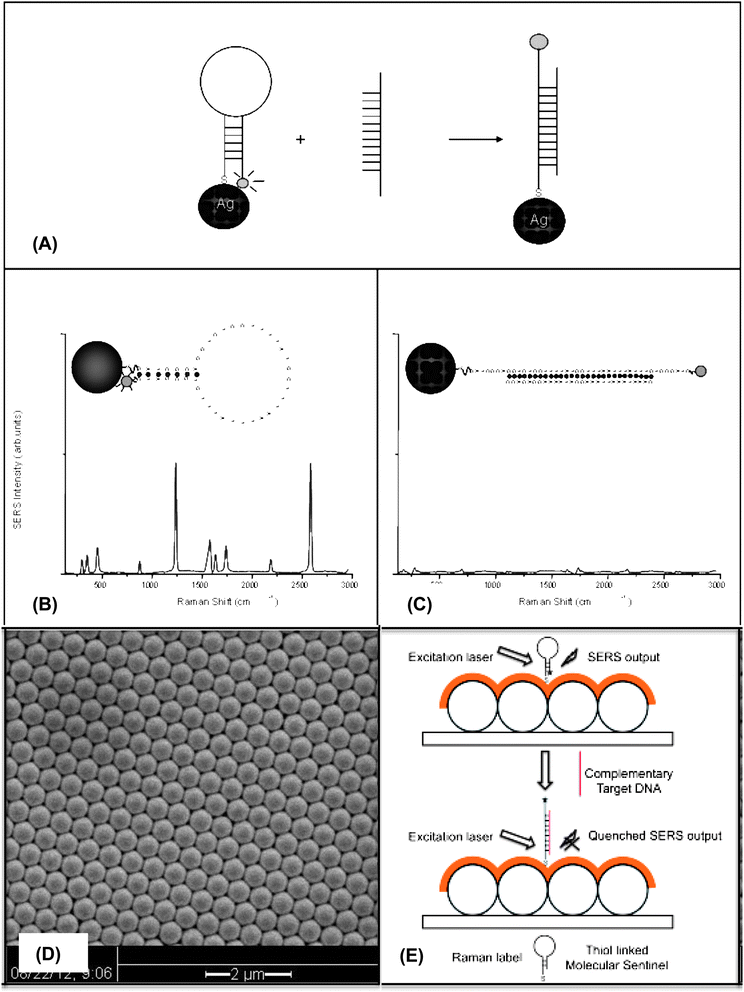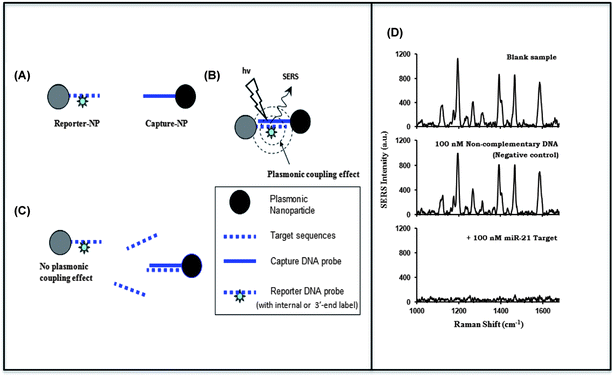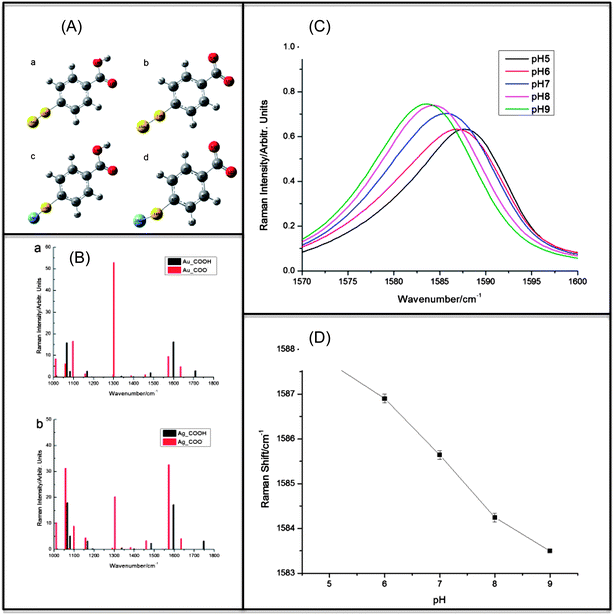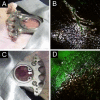Plasmonic nanoprobes: from chemical sensing to medical diagnostics and therapy
- PMID: 24056945
- PMCID: PMC4355622
- DOI: 10.1039/c3nr03633b
Plasmonic nanoprobes: from chemical sensing to medical diagnostics and therapy
Abstract
This article provides an overview of the development and applications of plasmonics-active nanoprobes in our laboratory for chemical sensing, medical diagnostics and therapy. Molecular Sentinel nanoprobes provide a unique tool for DNA/RNA biomarker detection both in a homogeneous solution or on a chip platform for medical diagnostics. The possibility of combining spectral selectivity and high sensitivity of the surface-enhanced Raman scattering (SERS) process with the inherent molecular specificity of nanoprobes provides an important multiplex diagnostic modality. Gold nanostars can provide an excellent multi-modality platform, combining two-photon luminescence with photothermal therapy as well as Raman imaging with photodynamic therapy. Several examples of optical detection using SERS and photonics-based treatments are presented to illustrate the usefulness and potential of the plasmonic nanoprobes for theranostics, which seamlessly combines diagnostics and therapy.
Figures










Similar articles
-
SERS nanosensors and nanoreporters: golden opportunities in biomedical applications.Wiley Interdiscip Rev Nanomed Nanobiotechnol. 2015 Jan-Feb;7(1):17-33. doi: 10.1002/wnan.1283. Epub 2014 Oct 15. Wiley Interdiscip Rev Nanomed Nanobiotechnol. 2015. PMID: 25316579 Review.
-
Plasmonic gold nanostars for multi-modality sensing and diagnostics.Sensors (Basel). 2015 Feb 5;15(2):3706-20. doi: 10.3390/s150203706. Sensors (Basel). 2015. PMID: 25664431 Free PMC article. Review.
-
Plasmonic Nanoprobes for in Vivo Multimodal Sensing and Bioimaging of MicroRNA within Plants.ACS Appl Mater Interfaces. 2019 Feb 27;11(8):7743-7754. doi: 10.1021/acsami.8b19977. Epub 2019 Feb 12. ACS Appl Mater Interfaces. 2019. PMID: 30694650
-
Nanobiosensing Using Plasmonic Nanoprobes.IEEE J Sel Top Quantum Electron. 2008 Jan;14(1):198-205. doi: 10.1109/JSTQE.2007.914738. IEEE J Sel Top Quantum Electron. 2008. PMID: 24839386 Free PMC article.
-
Raman Reporter-Coupled Ag(core)@Au(shell) Nanostars for in Vivo Improved Surface Enhanced Raman Scattering Imaging and Near-infrared-Triggered Photothermal Therapy in Breast Cancers.ACS Appl Mater Interfaces. 2015 Aug 5;7(30):16781-91. doi: 10.1021/acsami.5b04548. Epub 2015 Jul 23. ACS Appl Mater Interfaces. 2015. PMID: 26204589
Cited by
-
Multiplexed TEM Specimen Preparation and Analysis of Plasmonic Nanoparticles.Microsc Microanal. 2015 Aug;21(4):1017-1025. doi: 10.1017/S1431927615014324. Microsc Microanal. 2015. PMID: 26223550 Free PMC article.
-
Plasmonic color analysis of Ag-coated black-Si SERS substrate.Phys Chem Chem Phys. 2015 Nov 11;17(45):30461-7. doi: 10.1039/c5cp04506a. Phys Chem Chem Phys. 2015. PMID: 26510016 Free PMC article.
-
Research Trends in the Development of Block Copolymer-Based Biosensing Platforms.Biosensors (Basel). 2024 Nov 8;14(11):542. doi: 10.3390/bios14110542. Biosensors (Basel). 2024. PMID: 39590001 Free PMC article. Review.
-
Aptamer-switching optical bioassay for citrulline detection at the point-of-care.J Biomed Opt. 2019 Dec;24(12):1-6. doi: 10.1117/1.JBO.24.12.127002. J Biomed Opt. 2019. PMID: 31820595 Free PMC article.
-
Human Adipose-Derived Stem Cells Labeled with Plasmonic Gold Nanostars for Cellular Tracking and Photothermal Cancer Cell Ablation.Plast Reconstr Surg. 2017 Apr;139(4):900e-910e. doi: 10.1097/PRS.0000000000003187. Plast Reconstr Surg. 2017. PMID: 28350664 Free PMC article.
References
-
- Jeanmaire DL, Van Duyne RP. J. Electroanal. Chem. 1977;84:1–20.
-
- Albrecht MG, Creighton JA. J. Am. Chem. Soc. 1977;99:5215–5217.
-
- Moskovits M. Rev. Mod. Phys. 1985;57:783–826.
-
- Wokaun A, Gordon JP, Liao PF. Phys. Rev. Lett. 1982;48:957–960.
-
- Schatz GC. Acc. Chem. Res. 1984;17:370–376.
Publication types
MeSH terms
Substances
Grants and funding
LinkOut - more resources
Full Text Sources
Other Literature Sources
Miscellaneous

